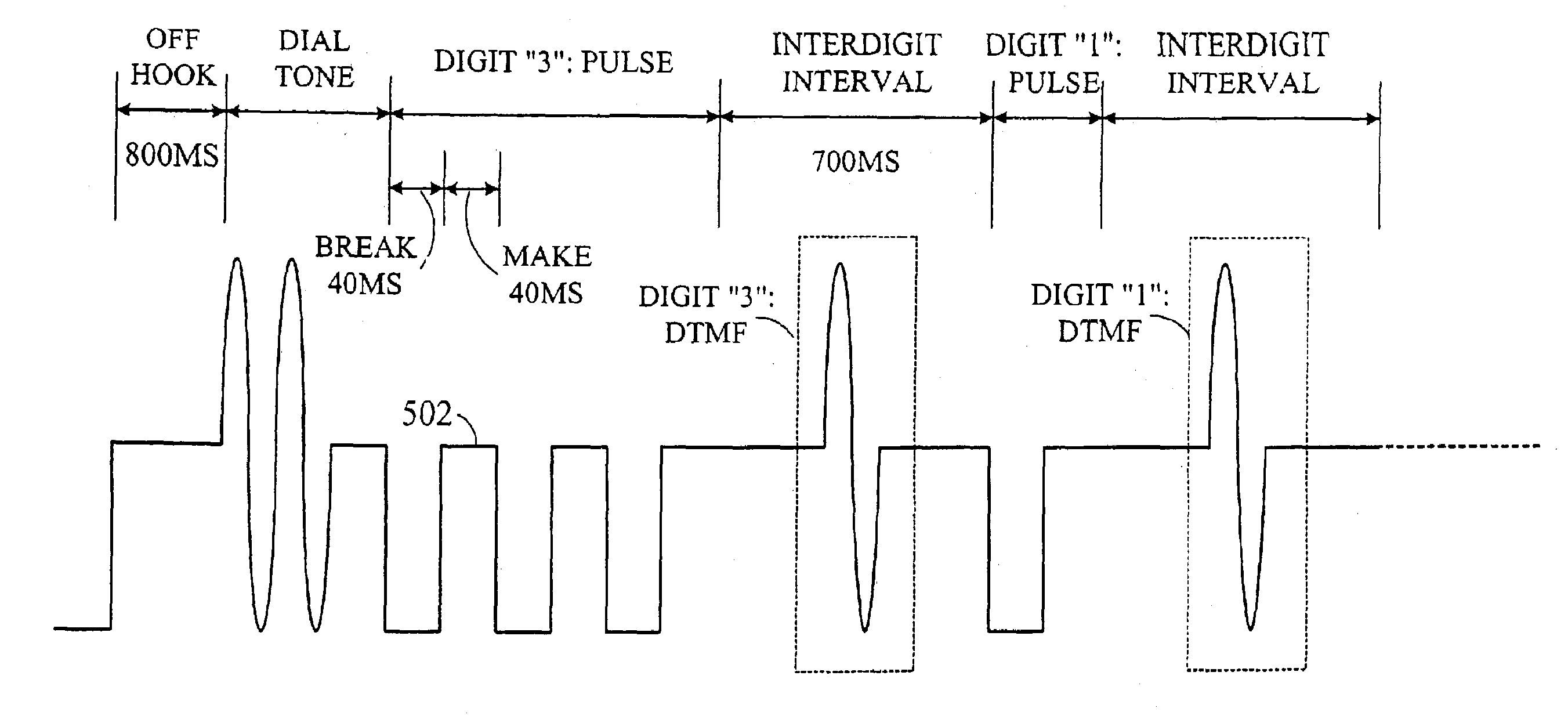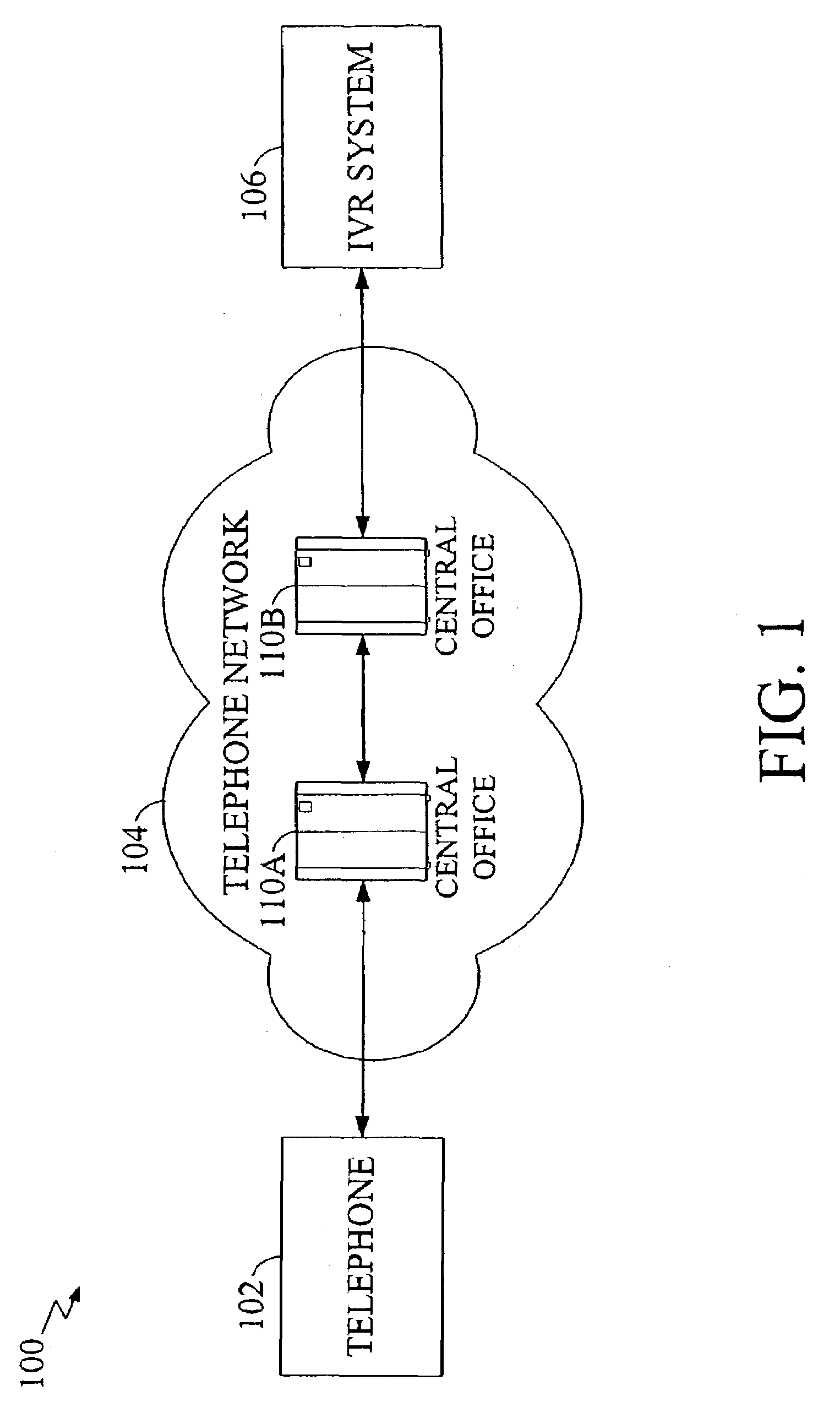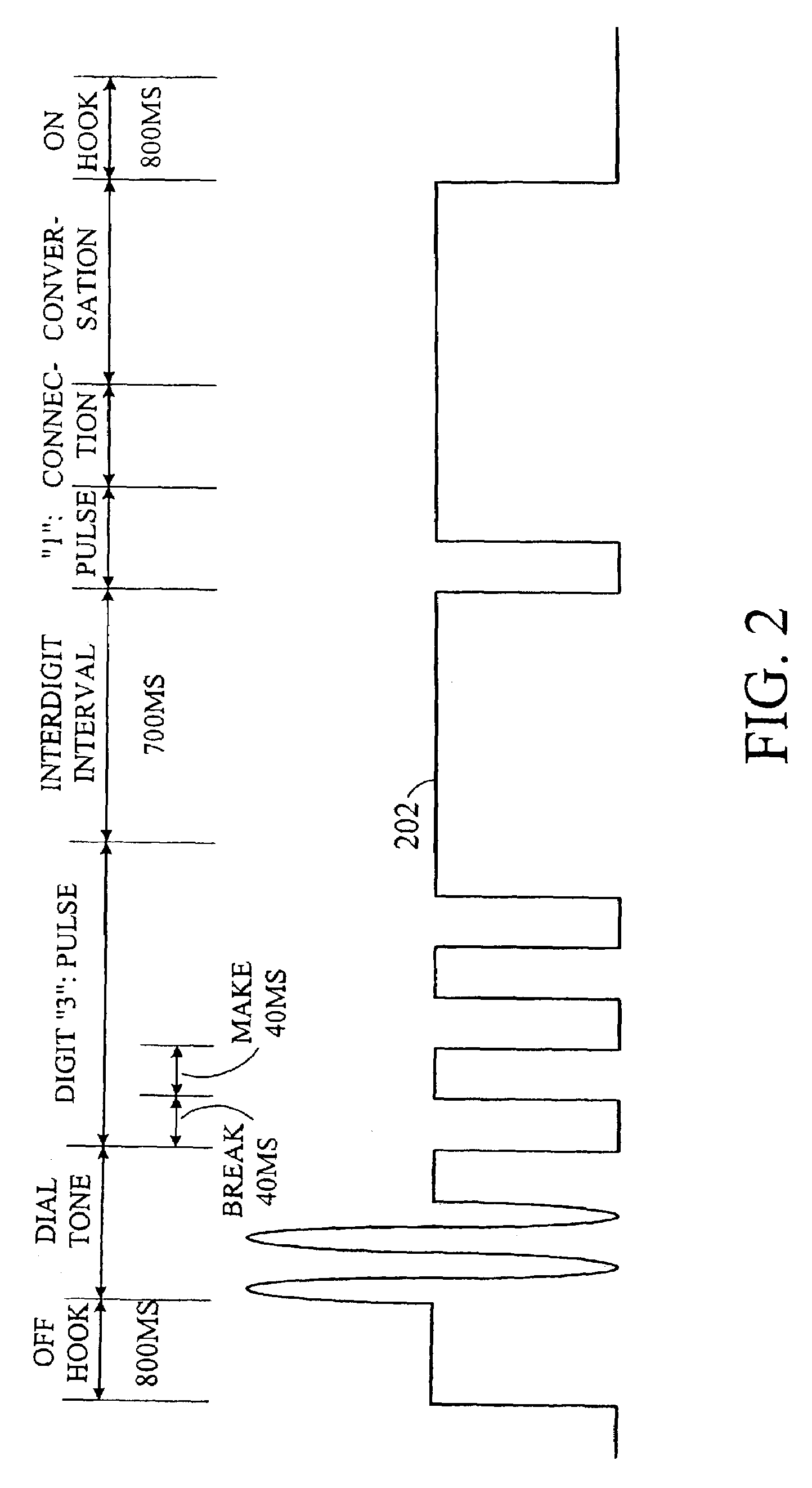System and method for providing universal access to voice response systems
a voice response and universal technology, applied in the field of telephonic communication, can solve the problems of large segment of the worldwide telephone market not being able to access the many and varied interactive voice response (ivr) systems, enhanced services, other call processing applications, and businesses and residential users not being able to access many efficiency-enhancing ivr applications such as voice mail, automated ordering systems,
- Summary
- Abstract
- Description
- Claims
- Application Information
AI Technical Summary
Benefits of technology
Problems solved by technology
Method used
Image
Examples
Embodiment Construction
[0071]Overview of the Environment
[0072]The present invention is directed to a system and method for allowing callers using DP telephones to access IVR systems. FIG. 1 depicts an example telephony environment 100 within which the present invention operates. A telephone 102 is connected to a telephone network 104. Telephone network 104 includes one or more central offices 110 (shown in FIG. 1 as 110A and 110B). Telephone 102 can be used to call other telephones, or other telephony devices such as an IVR system 106.
[0073]Telephone 102 can represent any telephone device that is capable of communicating using DP signaling. Telephone 102 may or may not be capable of communicating using DTMF signaling as well. Telephone 102 can include any input mechanism (not shown) for entering calling digits, such as a rotary dial or a pushbutton keypad.
[0074]Telephone network 104 can represent any telephone network that is capable of handling communications between telephone 102 and IVR system 106. For...
PUM
 Login to View More
Login to View More Abstract
Description
Claims
Application Information
 Login to View More
Login to View More - R&D
- Intellectual Property
- Life Sciences
- Materials
- Tech Scout
- Unparalleled Data Quality
- Higher Quality Content
- 60% Fewer Hallucinations
Browse by: Latest US Patents, China's latest patents, Technical Efficacy Thesaurus, Application Domain, Technology Topic, Popular Technical Reports.
© 2025 PatSnap. All rights reserved.Legal|Privacy policy|Modern Slavery Act Transparency Statement|Sitemap|About US| Contact US: help@patsnap.com



